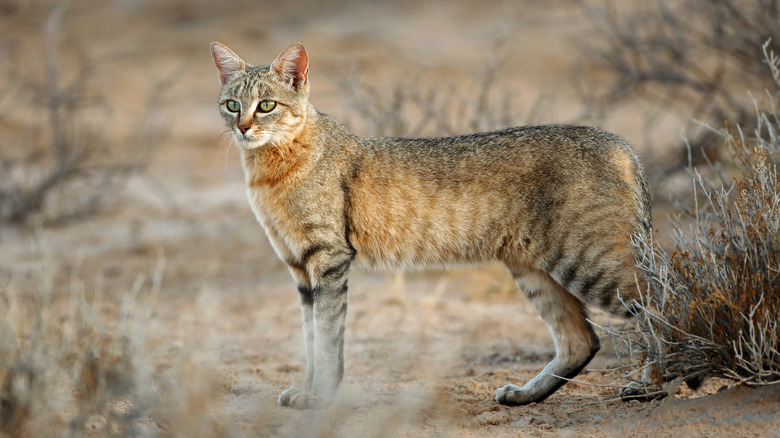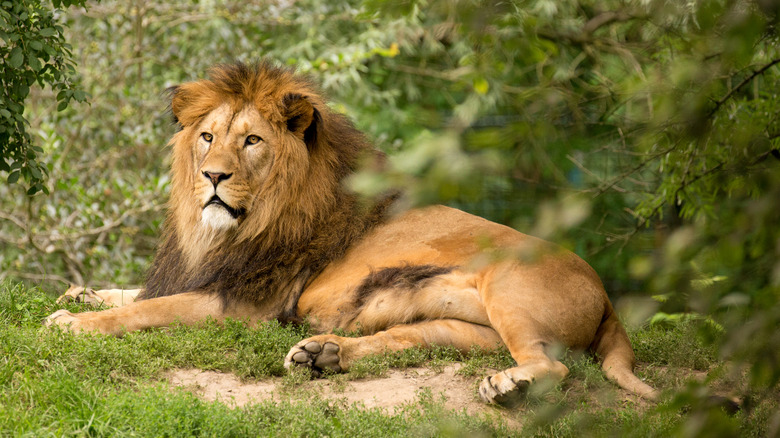What Pets In Ancient Egypt Looked Like
The earliest domestication of cats is tied to parts of the Fertile Crescent, a region that extends from Egypt to the Persian Gulf (via Library of Congress). The African wildcat (pictured above), an animal with a range that extends beyond even that, became a centerpiece of not just Egyptian households but their religion as well. In fact, they were so revered in social and religious contexts that it was not uncommon for them to be mummified and/or buried alongside their owners.
There are many pieces of art dedicated to both African wildcats and the gods that they inspired, such as Bastet (via National Geographic). Yet they were not the only animals to get such treatment. Many other animals — including dogs, monkeys, various birds, gazelle, and mongooses — were also common as pets and representatives of religious figures (via World History Encyclopedia). However, in the case of larger institutions such as temples or the monarchy, there was a much bigger budget that allowed for the keeping of even more exotic animals.
Pet lions and cheetahs were a sign of wealth in Ancient Egypt
While the last remnants of their wild population were wiped out in the mid-20th century, the Barbary lion (pictured above) could be found throughout North Africa. These big cats — as well as cheetahs imported from farther south — were commonly kept as pets by the wealthier members of Egyptian society (via The Vintage News). Though archaeological finds have been rare, these animals were also buried with their owners to accompany them into the afterlife (via CNN).
Despite being recognized today as the most dangerous animals in Africa, hippos were purportedly used as pets on rare occasions, though they were more often killed for food, ivory, and to remove them as a public hazard (no mummified hippos are known to exist, per BBC). While not often kept as pets, the Nile crocodile is another animal that was extensively mummified in Ancient Egypt (via Smithsonian). Although they were recognized for the exceptional danger they posed to farmers, they were still venerated as powerful offerings to gods. For this reason, they were often hunted in the wild as well as captive-bred.

